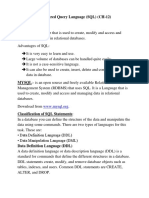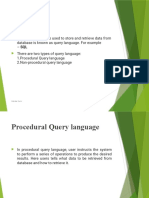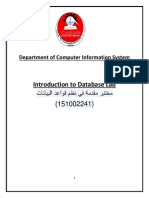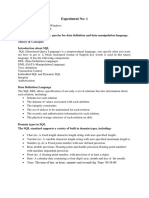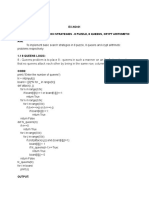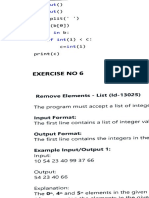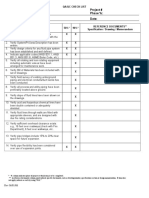0% found this document useful (0 votes)
152 views7 pagesDBMS Exercise 1
The document provides instructions on creating tables, inserting data, and performing other data manipulation operations using SQL. It includes:
1. Creating tables like BRANCH, STUDENT, MARKGRADE, and PROJECT with different fields and constraints.
2. Examples of SQL commands to insert, select, update, and delete data like inserting student records, displaying table contents by branch number, updating student marks, and deleting records.
3. Practice problems involving creating tables, inserting data, displaying results based on conditions, updating records, and deleting records.
Uploaded by
KIRUTHIKA V UCS20443Copyright
© © All Rights Reserved
We take content rights seriously. If you suspect this is your content, claim it here.
Available Formats
Download as DOCX, PDF, TXT or read online on Scribd
0% found this document useful (0 votes)
152 views7 pagesDBMS Exercise 1
The document provides instructions on creating tables, inserting data, and performing other data manipulation operations using SQL. It includes:
1. Creating tables like BRANCH, STUDENT, MARKGRADE, and PROJECT with different fields and constraints.
2. Examples of SQL commands to insert, select, update, and delete data like inserting student records, displaying table contents by branch number, updating student marks, and deleting records.
3. Practice problems involving creating tables, inserting data, displaying results based on conditions, updating records, and deleting records.
Uploaded by
KIRUTHIKA V UCS20443Copyright
© © All Rights Reserved
We take content rights seriously. If you suspect this is your content, claim it here.
Available Formats
Download as DOCX, PDF, TXT or read online on Scribd
/ 7












